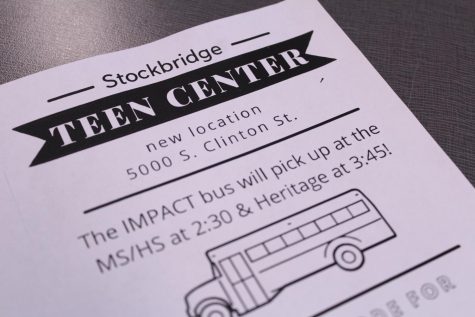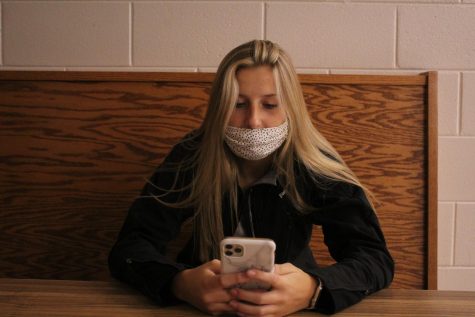America’s education system dims in Chinese shadow
LEARNING BY DOING. Repairing a thruster from a motor, underwater robotics team member, junior Kael Bunce, fixes the hindered motor piece to safeguard the motor from rust that the salty waters near the American Samoa may cause. The team traveled to the U.S. territory located in the South Pacific Ocean to teach school children underwater robotics and to conduct bottom fish studies in an educational setting that promotes understand of rigorous curriculum, yet a creative approach to learning.
One four hour stretch predicts the course of a high schooler’s life into adulthood. Seems ludicrous, because we are told to believe in second chances. Yet, the weight of the college entrance exams can crush college hopefuls.
“The SAT is extremely important to me,” junior Andrew Carriero said. “It’s something that everything in school has been leading to and this determines a lot.”
The pressure on students to have to excel on tests gives them a lot of stress; that feeling is different in other places in the world, more specifically, China.
America and China have fought an intense educational war affecting numerous students on both continents: the American system striving for higher test scores, the Chinese striving for a boost in creativity and style.
These two educational powerhouses have tried to emulate each other for years now.
The result? If you plan on going to college, you may have to share your experience with hundreds of top tier Chinese seniors attempting to get the best education. “In 2016, 329,000 Chinese born college students were attending an American university,” According to The New York Times.
Locally, the numbers reflect higher enrollment.
Over 8 percent of the freshman class at Michigan State University identified as coming from Asian countries in 2018, while over 10 percent identified at University of Michigan in the same year.
While the interest in American education has increased over the past 10 years, it’s not all fun and games for these students.
A 2013 Yale survey found that “45 percent of Chinese international students who attended Yale showed symptoms of depression, and 29 percent showed symptoms of anxiety.”
This isn’t the only negative effect coming with this burst of educational superiority. “Many described having trouble establishing trust with their advisers. Some feared that the language barrier might lead advisers to doubt their intelligence,” according to New York Times.
Along with these already devastating effects, these impressionable Chinese high schoolers get worried and afraid of getting into some serious trouble due to a simple matter of a typo or improper use of a phrase (The New York Times). These fears say much about the education style in China.
Chinese education not only exhibits extremely strict policies, but uses threats to keep students in line as detailed in Lenora Chu’s book, “Little Soldiers: An American Boy, A Chinese School, and The Global Race to Achieve.” Chu’s son, Rainey, was threatened by his teacher that if he didn’t take a nap like required, the police would take him away. He was also force fed eggs by his teachers, which Chu said Rainey hates.
Although Rainey’s grades improved, the discoveries Chu made still resembled a militaristic education system, in which students are forced to succeed or get isolated.
Think of it like a garden. The education system in China seems more like a pick and choose, weeding out weaker students and allowing the smarter ones to succeed.
America’s education system resembles a nursery, which tries to allow all students to grow, not purposely picking one before another. However, allowing a garden to freelance too much can end in overgrowth and problem that will force the caretaker to do so much to control and solve the issue at hand.
The U.S. education system gives of a more relaxed feel as opposed to the Chinese system; meanwhile, this freer feeling in students could end up causing overconfidence and apathy, especially when it comes to more important assignments and group work.
The education systems differ greatly, yet both strive to emulate each other because of the different types of graduates they produce.
The Chinese system produces students with very high test scores, while the American system produces more creative and innovative students.
Over the past 2 decades America has implemented various laws, grants and programs including Goals 2000 initiated by Bill Clinton, No Child Left Behind initiated by George W Bush, and Race to the Top initiated by Barack Obama.
Goals 2000 outlined goals for the American educational system to reach by the year 2000.
Most of these goals stayed unaccomplished, and soon after, a much criticized program called No Child Left Behind took its place providing an influx of money to schools in an attempt to boost test scores.
Race to the Top put into action by Barack Obama set up a skeleton of sorts for our current educational system. It encouraged local governments and school systems to make a plan for how they would improve to help students grow.
All of these changes appear to bring us closer and closer to the traditional Chinese educational system. These alterations bring up a very big question: Why would we try to adopt a system that puts a strain on creativity and limits the imaginative abilities of its students?
A better solution could include a blended classroom that incorporates qualities from both the strict chinese system but also the engaging and empowering American systems.

Sidney Gipe is a bubbly and happy person who likes to have fun and enjoy whatever she is doing, She wants to have no regrets. Sidney is not afraid to show...










